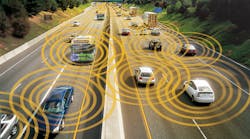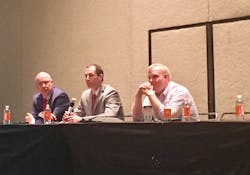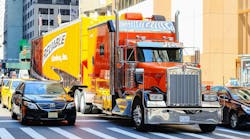ORLANDO. American Trucking Associations (ATA) has adopted a policy position it said would help guide efforts shape the development and regulation of automated vehicles.
“Automated and connected vehicle technologies have the potential to dramatically impact nearly all aspects of the trucking industry. These technologies can bring benefits in the areas of safety, environment, productivity, efficiency, and driver health and wellness,” ATA said in the policy paper, formally adopted during the 2017 Management Conference & Exhibition.
ATA is calling for more demonstrations of automated trucks to provide data to establish safety and other benefits.
It said the regulation of performance and technical specifications of automated technologies should be solely the responsibility of the federal government, while states should ensure a single, unified framework to facilitate testing and deployment.
Additionally, ATA said all laws and regulations “should neither require, nor limit differing levels of automation,” allowing fleets to decide what is best for them.
Along the same lines, it said infrastructure investments should benefit both automated and conventional vehicles.
Kirk Steudle, director of the Michigan Department of Transportation, underscored the need for states to compete individually, but also “collaborate together.”
Speaking at a panel discussion on automated vehicles, he said a number of states are working together to set common standards how vehicles communicate with infrastructure, such as traffic signals.
He also acknowledged “many drivers are freaked out by automated cars.”
It is one reason why heavy trucks have not always been included in laws and demonstrations involving automated vehicles.
“Let’s take a measured approach,” he said.
He noted truck platooning could be a good way to get the general public comfortable with these emerging technologies.
The advancement of driver assistance systems are about reducing accidents, increasing efficiency, and aiding driver retention, said Darryl Oster, assistant chief engineer of Peterbilt Motors Co. They are not about creating driverless trucks.
“We will not forget about the driver,” he said, noting the work Peterbilt does to avoid distractions when developing its dashboard displays.
Dr. Ben Sawyer, a researcher with MIT, warned that anyone who does not think automated vehicles are coming, they need to realize they are already here.
Conversely, those who believe that fully autonomous roadways will become a reality in our lifetimes “are also very likely wrong.”
That is what makes the current environment so “fascinating,” Sawyer said, because humans and machines are “teaming” up to drive. Finding that right safety mix through research and investments will go on for years to come, he added.




